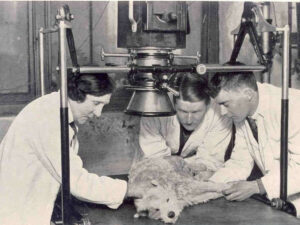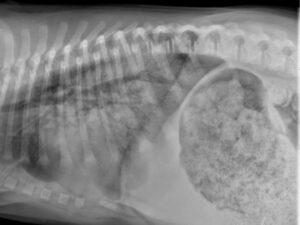Wondering if hyperbaric oxygen therapy is on the radar of veterinary professionals? A common challenge in the canine care industry is dealing with serious ailments and injuries that resist conventional treatments.
Enter Hyperbaric Oxygen Therapy (HBOT) for dogs, a solution showing promise as a novel approach to canine care. HBOT introduces pure oxygen in a pressurized chamber to expedite the healing process. This comprehensive guide will unpack the science behind this innovative therapy, offering in-depth insights into its applications and potential benefits for our four-legged friends.
Read on to unravel this progressive veterinary care method.
1. Understanding HBOT for Dogs
A dive into the sphere of canine health reveals an emerging trend: Hyperbaric Oxygen Therapy (HBOT). It promises to revolutionize how to approach the healing process in dogs. This segment elucidates the concept, historical development, and notable benefits of HBOT in canine care. Here is a brief overview for a better understanding.
Historical Background of HBOT in Veterinary Medicine
Initially, hyperbaric oxygen therapy was developed for human medical practices. In my friend’s early days as a vet, the idea of HBOT for pets was alien. Over the years, though, it gradually transitioned into veterinary medicine. It’s now seen as an innovative and effective treatment for canine health conditions.
The advent of HBOT in the field of veterinary medicine began as a ripple and has now grown into a wave. Veterinarians globally have embraced this technology to improve the well-being of pets. When I first heard of HBOT, skepticism was my first reaction. But with its increasing success stories, acceptance soon replaced doubt.

How Hyperbaric Chambers Work for Dogs
To understand the mechanism of HBOT, it is essential to comprehend how hyperbaric chambers function. These chambers serve as the core of the therapy. They allow dogs to receive high concentrations of oxygen under pressure, stimulating the healing process. The operation of a hyperbaric chamber is straightforward yet fascinating. The pressurized chamber allows for higher oxygen uptake in a dog’s bloodstream.
Having witnessed this in practice, it’s inspiring to see the impact on a dog’s recovery speed. Reliable brands such as OxygenArk manufacture hyperbaric chambers, enabling optimal application of HBOT. Now, imagine a scenario where a canine patient is placed inside the chamber, and it’s pressurized with pure oxygen. It results in increased oxygen levels in the bloodstream, promoting faster healing.

Advantages of HBOT for Canines
Hyperbaric oxygen therapy extends numerous benefits for canine health. From enhancing wound healing to boosting the immune response, HBOT appears to be a game-changer. This comprehensive outlook will give an understanding of the different advantages of HBOT in the context of canine health. See the following below:
-
Accelerated Healing Process
Hyperbaric Oxygen Therapy (HBOT) encourages the formation of new blood vessels in damaged areas. This is critical for cell repair and rejuvenation. It also supports the production of collagen, a key protein in wound healing. From my experience, seeing the rejuvenation happening is awe-inspiring. This therapy can significantly shorten recovery time, getting our canine friends back to their energetic selves faster.
-
Enhanced Infection Control
Hyperbaric oxygen therapy also plays a pivotal role in fighting infections. By increasing the amount of oxygen in the blood, the therapy helps bolster the immune system. This aids in killing bacteria, reducing swelling, and deterring the spread of infection. HBOT can be a game-changer for dogs battling stubborn infections. The power to ward off infections more efficiently can mean a world of difference in a dog’s health.
-
Improved Oxygen Supply
HBOT facilitates better oxygen supply throughout a dog’s body. Higher oxygen levels mean better organ function, as cells can perform their duties more effectively. This includes critical organs like the heart, lungs, and brain. For a canine’s well-being, this improved oxygen supply can be incredibly beneficial. The upshot? Healthier, happier dogs with a significantly improved quality of life.
-
Alleviates Chronic Conditions
Dogs with chronic conditions such as arthritis can benefit immensely from HBOT. The therapy reduces inflammation, a common cause of chronic pain in dogs. By doing so, it alleviates discomfort and enhances mobility. The relief it offers is profound, improving a dog’s day-to-day life. It’s a ray of hope for those grappling with the constant struggle of chronic conditions.
-
Versatile Therapeutic Application
The versatility of hyperbaric oxygen therapy is truly commendable. It’s not just for post-operative recovery or chronic conditions. It can be applied to a wide range of health issues, from acute traumas to neurological disorders. This adaptability makes it an invaluable tool in a veterinarian’s arsenal. With such wide-ranging applications, it’s no wonder that more and more vets are embracing this method.
2. Conditions Treated With Hyperbaric Oxygen Therapy in Dogs
A myriad of health issues plaguing dogs can be addressed with HBOT. This section delves into various conditions and problems that dogs experience and that can be treated effectively with this therapy. Here are some details to keep in mind:
Healing Wounds and Tissue Injuries
HBOT proves highly efficient in accelerating wound healing and tissue repair in dogs. When a dog is placed inside a hyperbaric chamber, the enriched oxygen environment promotes rapid tissue regeneration. For example, there were times dogs suffering from snake bites showed improved recovery rates with HBOT. On several occasions, the incredible transformation of dogs post-therapy has been heartwarming to witness.

Addressing Joint and Bone Conditions
Joint and bone conditions in dogs are areas where HBOT shows tremendous potential. With therapy, there is an enhanced oxygen supply to affected areas, reducing inflammation and aiding in faster recovery. HBOT remarkably eased the condition and improved the dog’s quality of life.

Respiratory and Pulmonary Conditions
Respiratory and pulmonary issues in dogs can be challenging to treat. Here, HBOT emerges as a strong contender in management and recovery. With increased oxygen delivery to the lungs, conditions like pneumonia can be effectively addressed. For veterinary clinics considering augmenting their treatment tools, a hyperbaric chamber from OxygenArk might be a valuable addition.

3. Preparing for Hyperbaric Oxygen Therapy
Preparation is a crucial phase when considering HBOT for dogs. There are several critical aspects to consider to ensure the therapy is safe and effective. Here are some essential key points to explore:
Dog Suitability and Eligibility
Not all dogs are suitable candidates for HBOT. Factors such as age, overall health, and the specific medical condition of the dog play a role in determining eligibility for this therapy. In my years in the business, I have seen many instances where HBOT has worked wonders for dogs, but it’s essential to ascertain suitability first. There are contraindications to therapy as well.
Necessary Diagnostic and Medical Tests
Prior to the administration of HBOT, several diagnostic and medical tests might be needed. These tests give a clearer picture of the dog’s health status and help to establish a baseline for monitoring progress. Additionally, they ensure that the dog is fit to undergo therapy and assist in tailoring the HBOT regimen. Radiographic studies, blood tests, and echocardiograms are some examples of diagnostic necessary procedures.
Handling Anxiety and Stress
HBOT is a non-invasive procedure, but some dogs might still experience anxiety or stress. This can be due to the unfamiliar environment of the hyperbaric chamber or the noise it generates. It is critical to manage this anxiety to ensure the dog’s comfort and the effectiveness of the therapy. Vets can use various techniques to reduce stress and anxiety. These include positive reinforcement training, etc.
4. The Hyperbaric Oxygen Therapy Process for Dogs
After preparation comes execution. The actual process of administering HBOT is systematic and requires careful attention to detail. This section presents an overview of the HBOT process for dogs. Here are some key points to keep at the forefront:
Step #1 Screening and Initial Evaluation
Before initiating HBOT, each dog must undergo a thorough screening and evaluation. This initial assessment includes a detailed history taking, a physical examination, and a review of diagnostic test results. I believe The goal is to gain a complete understanding of the dog’s health status. The screening process is also when potential risks and benefits of the therapy are assessed.
Step #2 Anesthesia and Sedation Considerations
While HBOT is a non-invasive procedure, some dogs may need sedation or anesthesia. This is particularly true for anxious dogs or those who might find it difficult to stay calm during the session. However, the use of sedation or anesthesia needs careful consideration and is not without risks. Sedation can help reduce anxiety and ensure that the dog remains calm throughout the session.
Step #3 Session Duration and Frequency
The duration and frequency of HBOT sessions can vary based on the dog’s health condition and response to the therapy. Typically, sessions last for about one hour, but the exact timing can differ. Likewise, the frequency can range from daily sessions to a few times per week. Continuous assessment of the dog’s response to therapy is necessary. For example, a dog with a severe wound might initially require daily sessions.
Step #4 Monitoring and Adjusting Treatment Parameters
Monitoring during HBOT sessions is crucial to ensure the dog’s safety and therapy efficacy. Oxygen levels, pressure settings, and the dog’s vital signs are some aspects that need constant surveillance. In addition, any adverse reactions should be promptly addressed. In my experience, choosing the best chambers offers excellent control over these treatment parameters, which is a worthy consideration for any veterinary practice.
5. Potential Risks and Side Effects
Like all medical procedures, HBOT carries certain risks and potential side effects. It’s important to be aware of these to ensure the best outcomes for canine patients. This section aims to shed light on these aspects, providing necessary information for veterinarians and pet care facilities. Here are the vital aspects to remember:
Oxygen Toxicity
While oxygen is essential for life, too much of it can potentially be harmful. Known as oxygen toxicity, can occur during HBOT if oxygen levels are not adequately controlled. It can result in lung damage and other health issues. Symptoms of oxygen toxicity in dogs can include changes in behavior, trouble breathing, and disorientation. Therefore, constant monitoring of oxygen levels during therapy sessions is crucial.
Barotrauma
Due to the increased pressure in the hyperbaric chamber, barotrauma is a potential risk. This condition involves damage to body tissues caused by a significant difference in pressure between the inside and outside of an organ. The ears and lungs are commonly affected. In HBOT, vets must be vigilant for signs of barotrauma. These can include ear discomfort, coughing, or difficulty breathing.
Claustrophobia and Anxiety
Some dogs may experience claustrophobia or anxiety due to the enclosed space of the hyperbaric chamber. These feelings can make the procedure uncomfortable and decrease its effectiveness. In extreme cases, it may prevent the therapy from being performed at all. Handling these issues might involve sedation or the use of anti-anxiety medications. With patient and empathetic handling, many dogs can successfully undergo HBOT.
Fatigue
Following a session of HBOT, dogs might experience fatigue. This is often due to the increased metabolic activity stimulated by high oxygen concentration. While not harmful, this effect should be considered when scheduling sessions and managing the dog post-therapy. Post-session fatigue is usually temporary and should not be a cause of concern. Regular monitoring and rest between sessions can mitigate this side effect.
Fire Risk
While rare, there is a slight fire risk associated with HBOT due to the high concentration of oxygen. Any spark can potentially lead to a fire in an oxygen-rich environment. Therefore, stringent safety protocols must be in place. Any objects that can produce a spark or are highly flammable should be kept out of the chamber. I believe only approved bedding and materials should be used inside.
6. Finding the Right Veterinary Hyperbaric Facility
In my point of view, choosing a veterinary hyperbaric facility for a canine patient goes beyond proximity and cost. The quality of care, facility standards, and professional qualifications are essential considerations. Here outline some critical aspects to consider when choosing an HBOT facility for dogs.
Accreditation and Certification
A key factor in choosing a hyperbaric facility is its accreditation and certification status. Accredited facilities adhere to high standards of care and safety, providing reassurance of the quality of service provided. In addition, the staff should have proper certification in administering HBOT. Certification indicates that the team has undergone training and has the necessary knowledge and skills to perform therapy safely and effectively.
Qualifications for the Veterinary Team
The expertise and experience of the veterinary team are critical in administering effective and safe HBOT. The team should include veterinarians and technicians with specific training in HBOT. They should also have a solid understanding of the underlying conditions being treated. In addition, the team’s ability to recognize and promptly address any potential complications is crucial.
Facility Amenities and Safety Standards
When considering a hyperbaric facility, take note of the amenities and safety standards. These can include the availability of on-site diagnostic services, the cleanliness and comfort of the facility, and the features of the hyperbaric chambers used. Safety standards should comply with industry guidelines, including fire prevention measures and emergency protocols. Encouraging a facility tour and asking questions can help these aspects.
| Amenities |
Safety Standards |
| Advanced Hyperbaric Chambers |
Properly maintained and regularly inspected hyperbaric chambers to ensure safety and efficacy. |
| Highly Trained Staff |
Qualified and experienced veterinary professionals trained in hyperbaric treatment protocols. |
| Comfortable Waiting Area |
A relaxing and comfortable waiting area for pet owners during treatment sessions. |
| Oxygen Monitoring |
Continuous monitoring of oxygen levels inside the chamber to avoid potential risks. |
| Veterinary Monitoring |
Continuous monitoring of animals during treatment to ensure their well-being. |
| Emergency Response Plan |
A comprehensive plan for handling emergencies, including chamber-related incidents. |
| Safety Equipment |
Availability of safety equipment, including fire extinguishers and first aid supplies. |
| Controlled Entry and Exit |
Controlled access to the chamber area to prevent unauthorized entry. |
| Sanitation and Cleanliness |
Regular cleaning and disinfection of chambers and facilities to maintain hygiene. |
| Secure and Pet-Friendly Layout |
Design of the facility to ensure the safety and comfort of animals during treatment. |
Conclusion
Throughout this journey, a broad spectrum of topics surrounding Hyperbaric Oxygen Therapy (HBOT) for dogs was tackled. Delving into the science of HBOT, its role in veterinary medicine, and its application and effectiveness in various canine medical conditions were laid out. The undeniable potential of this advanced treatment modality in accelerating recovery, reducing inflammation, etc. was underlined.
As business professionals serving the veterinary industry, how might this innovative therapy transform the landscape of pet healthcare in your facilities? For further questions and inquiries, don’t hesitate to reach out. OxygenArk, as a leading manufacturer of hyperbaric chambers, we are ready to assist in uncovering the opportunities this therapeutic tool can offer. Contact us today!





